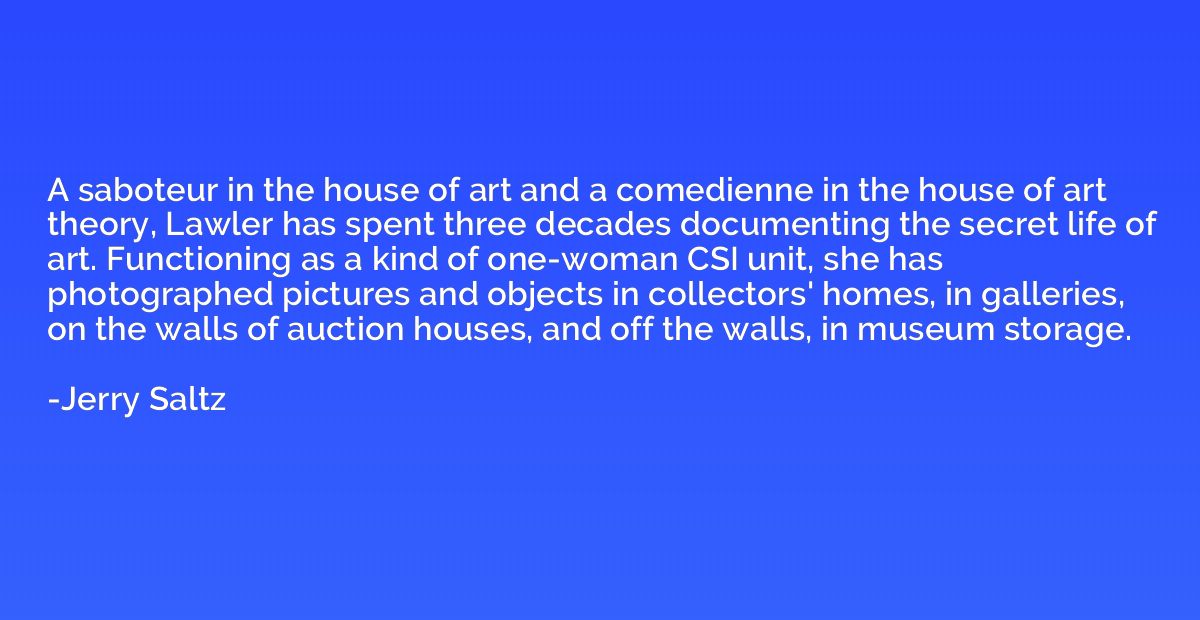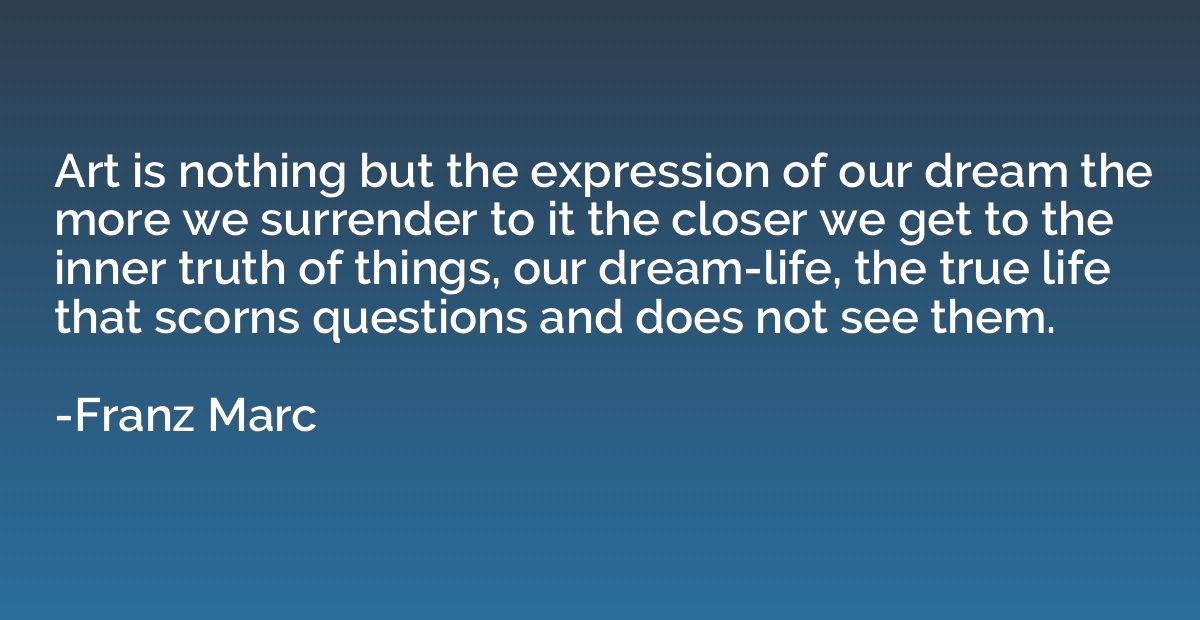Quote by Jerry Saltz
A saboteur in the house of art and a comedienne in the house of art theory, Lawler has spent three decades documenting the secret life of art. Functioning as a kind of one-woman CSI unit, she has photographed pictures and objects in collectors' homes, in galleries, on the walls of auction houses, and off the walls, in museum storage.

Summary
This quote describes the artist and photographer, Louise Lawler, as someone who disrupts the conventional notions and theories of art. Lawler has dedicated her career to capturing the "secret life of art" and revealing the often unseen aspects of the art world. Through her photographs, she explores the presence and display of art in various settings, ranging from collectors' homes to galleries, auction houses, and museum storages. Lawler's work can be seen as a critical examination of the relationship between art, its context, and the power dynamics within the art world.
Topics
Art
By Jerry Saltz














